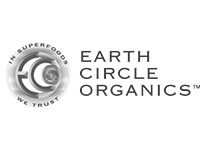Gluten Free
What does following a gluten-free diet mean? That you're embarking on an easy diet with a wide range of health-promoting effects. Instead of dwelling on what you’re giving up, consider that you’re going to enjoy a whole new world of delicious food options to meet your special dietary needs. You’ll be eating seasonally, choosing more fresh fruits and vegetables, focusing on meats, seafood, poultry, legumes, lentils, corn, and rice, and discovering fascinating ancient grains such as quinoa, amaranth, and millet. You’ll be able to eat potatoes, eggs, most cheeses, even chocolate (!)—and enjoy them without guilt because you’ll be taking good care of your body. In fact, you’ll probably end up eating—and feeling—better than ever!
Visit this page for more information about living Gluten Free
---
We carry a large variety of gluten free items, the brands listed below represent just some of the offerings we carry












Raw Foods
“Raw” is all the rage these days, but what does it mean to eat raw? And is it possible to get enough protein and other nutrients while following a raw diet?
Raw foods are those that have not been heated above 108°F to 118°F
Raw, defined
Most raw foodists eat only plant-based (vegan) foods, including vegetables, fruits, nuts, seeds, legumes, and seaweed. Raw foods are those that have not been heated above 108°F to 118°F, depending on who you talk to. The logic behind this is that many of the nutrients in foods are extremely sensitive to heat. This is especially true of the water-soluble vitamins, like the B-vitamins, folate, and vitamin C. As Katie McDonald, a raw food chef and certified Holistic Health Coach in Rhode Island puts it, “The more you do to a food, the less it does for you.”
Raw food advocates also look to the enzyme content of raw foods, saying that cooking destroys delicate enzymes that could otherwise go toward improving the digestion of the foods you’re eating.
---
In addition to our always fresh produce, we carry many more raw foods throughout our stores. Look for these brands and our Raw Foods section for more.



More Diets
The Tea Files: Guayusa Tea and It’s Benefits
Guayusa tea is made from the leaves of the Amazonian tree, Ilex guayusa. The guayusa tree grows predominantly in Ecuador but can also be found in the Amazonian regions of Peru and Colombia. A cup of guayusa tea has about as much caffeine as a cup of brewed coffee, and indigenous Ecuadorians have traditionally cultivated the guayusa tree to enjoy the stimulating tea made from its leaves. Guayusa tea is marketed as an energy drink high in antioxidants. It’s also reported to have a smoother taste than high-tannin teas like green and black teas, which are made from an unrelated plant, Cammelia sinensis.
In one animal study, diabetic mice had better blood sugar control after ingesting an extract from guayusa. Although this doesn’t prove that guayusa has an anti-diabetic effect in people, the fact that other caffeinated beverages like coffee, mate, and green and black teas have all been found to have a positive effect on sugar metabolism and diabetes risk adds weight to the possibility.
Source: Journal of Ethnopharmacology
Copyright © 2025 TraceGains, Inc. All rights reserved.











